Third and the last story behind airplanes included in PZL P.7a Expert Set 1939 model kit. History, coulours and markings of the 162 Fighter Squadron from Lwów. Younger of Polish Fighter units, III/6 fighter wing was involved in heavy fights against Wehrmacht spearhead, attacking through city of Łódź to Warsaw. Read story of the most successful unit of the P.7a in 1939!
PZL P.7a, 162. Fighter Squadron from Lwów, in September 1939 attached to the “Łódź” Army.
New squadrons of the East
In 1937 the High Command ordered improvement of the eastern border defence, which resulted in relocating some fighter units personnel from the West to the Kresy (Eastern Borderlands). In northern City of Wilno the III/5 Fighter Wing has been created, and in the South, in the City of Lwów the pilots and ground personnel of disbanded 133. Fighter Squadron from Poznań formed the III/6 Fighter Wing, including two squadrons: 161. and 162. Initially both squadrons had got the PZL P.7a airplanes, but soon the 161. has replaced them with more modern PZL P.11c, passing their worn “sevens” to Wilno to the 151. But there were not enough “elevens” for the 162.
Airplane number “4” with military serial 6.144. Photo taken in Lwów shortly before the war. After 1st September underwing number “J 52” might have been overpainted. Dr. Tomasz Kopański collection
War in Army “Łódź” ranks
In September 1939 the Lwów Fighter Wing has not been split, it was attached as a whole to the Army “Łódź”, as this Army was located on the route of the main German offensive from Silesia towards Warsaw. In the first days of war the airplanes were stationed on the Widzew-Ksawerów airfield, performing missions typical for the front fighter units, initially against long range rec planes and Messerschmitt-defended bomber groups flying to the Polish rear, but soon the advancing German armies brought occasions to the different actions – against short range army-reconaissance airplanes and the Stuka dive-bombers attacking Polish ground units. Polish fighters operated from the main field base and a few “ambushes” – provisional, camouflaged airfields in the neighbourhood. While their actions were not as intensive as in the Warsaw-defending Pursuit Brigade, the occasions to meet the enemy were often.
Most effective squadron of “sevens”
Precise reconstruction of the September activities of the 162. Squadron is very difficult, as practically for the whole time the unit operated with 161. Squadron under the Wing command. The cooperation was so close that even the three-airplane sections often included pilots and planes from both squadrons! Additionally, it was quite usuall that aviators of one squadron have used the airplanes from the other. For example, excellent fighter, future ace 2nd Lt. Czesław Główczyński for his aid in the staff office on the ground has been granted right to use Wing commander’s personal PZL P.11c, marked with diagonal white stripe instead of squadron number on the fuselage side. But there is no doubt that the 162. was the most successful PZL P.7a squadron. I will try to describe some of its most interesting combats.
PZL P.7a, serial number 6.125, “blue 5” from 162. Fighter Squadron from Lwów. In September 1939 the airplane took part in air combat and has been damaged. Partially dismantled airframe has been transported towed by a truck and was lost during attack of German saboteurs on September 6 night. Well-known photo of the fuselage abandoned near destroyed truck is a great inspiration for diorama-builders. Markings of the airplane were included in PZL P.7a Deluxe Set.
Against Bf 110
In the 2nd September afternoon battle against a dozen of Messerschmits Bf 110 from ZG 76 regiment the Poles managed to shot down two or maybe even three “Messers”. After that fight the Germans have lost one “Zerstörer” crashed on the Polish side of the front (M8+AH, piloted by Oberleutnant Christoph Nagel, which fell south of Pabianice, pilot was captured and the gunner died), the second has crash-landed near Byczyna (then Pitschen, German Silesia – it was M8+FH of Lt. Gerhard Böhmel, damaged in 40%) and the third, piloted by Uffz. Helmut Mütschele who bailed out (the gunner was already dead) and the plane crashed near “Rebnitz” (it’s difficult to determine the location, the name of the place has probably been misspelled in the report). Corporal Jan Malinowski flying the PZL P.7a participated at least in one of these victories (together with 2nd Lt. Główczyński and 2nd Lt. Tadeusz Koc flying PZL P.11c). Other Germans were probably shot down by pilots of the 161. Squadron. The Nazis made two mistakes: they allowed the Poles to surprise them and then they got involved in short range dogfight, in which the speed of the Messerschmitts was less important than PZL’s agility. Poles have lost in this fight two “elevens” lost and two damaged.
Messerschmitt Bf-110C from ZG76, photo taken in Spring 1940.
Adventures of Corporal Urbańczyk
The 3rd September was for Cpl. Zbigniew Urbańczyk the day of extraordinary flight, during which he has fought against airplanes of three types, of three kinds, and with three different results. After scrambling from the Chojne ambush against a few Dorniers Do 17Z of I/KG76, the flight of PZLs begun to chase the fast bombers. Poles were not able to catch high flying Germans, so two of the fighters returned to the airfield. But Cpl. Urbańczyk has continued the pursuit alone, crossing the frontline. Bombers flew away, but soon the pilot was able to spot, intercept and quickly shoot down the reconaissance Henschel Hs 126 of the army flight 2.(H)/23 working for the German 1. Panzerdivision. Immediately after that, when Urbańczyk tried to find the way home looking at the map, he has been surprised by the Germans. “With head down to the map, I felt a sudden tremor, then all the gauges on the control panel were bursting, my own ammunition under my feet was exploding, while the Messerschmitt 109 flew 20 meters over my head” – recalls Zbigniew Urbańczyk. Polish pilot has immediately dived and landed on the field, which probably saved his life. Quite shocked, he stayed in the cockpit for some time, till the Polish soldiers came to the airplane. The machine was severely damaged, but after some effort the pilot was able to start the engine and return to the home airfield (the plane finally was written-off). Though our aviator supposed that he has been attacked by the fighters, in fact he was shot down by the Stuka – Ju 87B dive bomber from the 5./StG 77 piloted by Lt. Walter Stimpel, who left his formation and dived straight to the lonely Polish airplane.
PZL P.7a, 162. Fighter Squadron from Lwów, in 1939 r. in „Łódź” Army. Airplane of the 2nd lieutenant Zdzisław Zadroziński (3 victories in September 1939)
Victory and defeat of 2nd Lt. Zadroziński
On 4th September 2nd Lt. Zdzisław Zadroziński fought against reconaissance Dornier Do 17 during early morning flight. Squadron commander has granted him confirmed victory, but the German aircraft might have been the plane from strategic reconnaissance 1.(F)/124 flight which managed to return to home base despite battle damage. Final verification of this claim is impossible as the documentation of the German rec flights has been partially lost. The same day, just before the noon, Zadroziński on his faithful PZL P.7a marked with number “10”, together with Lt. Tadeusz Jeziorowski, was scrambled against another Dornier. Suddenly the Poles have been attacked by 8 Messerschmitt Bf 109D from 1./ZG 2. Jeziorowski was killed and Zadroziński was wounded in his leg. The pilot has managed to land damaged airplane in the field and to leave it before the plane was strafed several times by the Germans. Immediately after that the 162. Squadron inflicted further losses, as the Messerschmits attacked the airfield, destroying or severely damaging three more PZL “sevens”. A few photographs of the shot down Zadroziński’s “10” are known, made by the Germans after the capture of the wreck.
Airplane number “10” with military serial 6.133 after force-landing by 2nd Lt. Zdzisław Zadroziński following the combat against Messerschmitts on 4th September. The wreck has been captured and photographed by Germans. Dr. Tomasz Kopański collection.
Relocation to the East and fights against Soviets
On 7th September Squadron’s remains were incorporated into the Pursuit Brigade – elite Polish fighter unit, initially created to defend Warsaw, which on the war’s second week has been relocated east to recover after hard fights. After 14th September till the evacuation to Romania (17th -18th Sept.) fighters operated from various airfields in south-eastern Poland, expecting new airplanes purchased in France and Britain. 2nd Lt. Zdzisław Zadroziński, despite wound from 4th Sept., flew combat missions till the very end of the campaign. During his last air patrol on 17th September he shot down two Soviet SB bombers from three attacking Polish railroad station near Nadwórna (presently Nadvirna in Western Ukraine). While these victories have not been oficially granted to Zadroziński (most probably because of upheaval caused by unexpected Soviet invasion and following evacuation to Romania), there are several serious accounts and official reports confirming not only the air combat, but also the crashes and the death of some and capture of other members of the Soviet bomber’s crews. Zadroziński himself has reported the fight, but recognised the enemy as German Heinkels, which lends additional credence to his account, as the SB bombers had, like Heinkels, single fins. During the evacuation to Romania, ordered the following day, Zadroziński had to leave his airplane due to engine malfunction. The last PZL P.7a in the Squadron, serialed 6.16, has been evacuated by Czesław Główczyński.
Zadroziński’s “10” in continuous deconstruction. The “souvenir hunters” have already removed the rudder and tried to cut the 162. Squadron marking – so often sight in September 1939. Dr. Tomasz Kopański collection
162. Squadron “sevens” colours
The PZL P.7a airplanes of the 162. Fighter Squadron had typical Polish fighter camouflage and marking, with squadron marking being a white stoat (or ermine) with blue wings, painted on the fuselage sides. Quite interesting for September 1939 was camouflage of two airplanes, with squadron numbers “4” and “10” and serials 6.144 and 6.133. These airframes were from the end of the last production series and, as relatively new, were not overhauled before the war, so were used in combat in initial factory scheme of rather light “early Polish khaki” and national markings (checkerboards) on the wings undersurfaces in red only, without the white fields. It Is possible that other planes in the unit had similar low-visibility markings, which could explain shooting down of one of the “sevens” by own anti-aircraft artillery on 2nd September.
While we know that the “10” was the airplane of Zdzisław Zadroziński, in which he has been shot down on 4th September (and shot down the Dornier earlier that day), so the war history of the “4” is unknown. We know that it was in the Squadron and that it was not evacuated to Romania, but if this airplane was victorious mount of Cpl. Urbańczyk of 3rd September, or has been shot in some of the fights, or destroyed by Messerschmitts on the ground on 4th September? We will probably never know, due to lack of preserved documents…
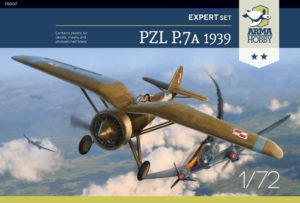 Advertisement
Advertisement
See PZL aiccrafts model kits in Arma Hobby Internet Shop.
Modeller, son and father of a modeller. Loves digging through references and analysing old photographs. He builds aircraft, ship and vehicle models, the older the better. He has a weakness for Polish equipment, but does not despise the RAF, FAA and Great War topics. A journalist by training.
This post is also available in:
 polski
polski


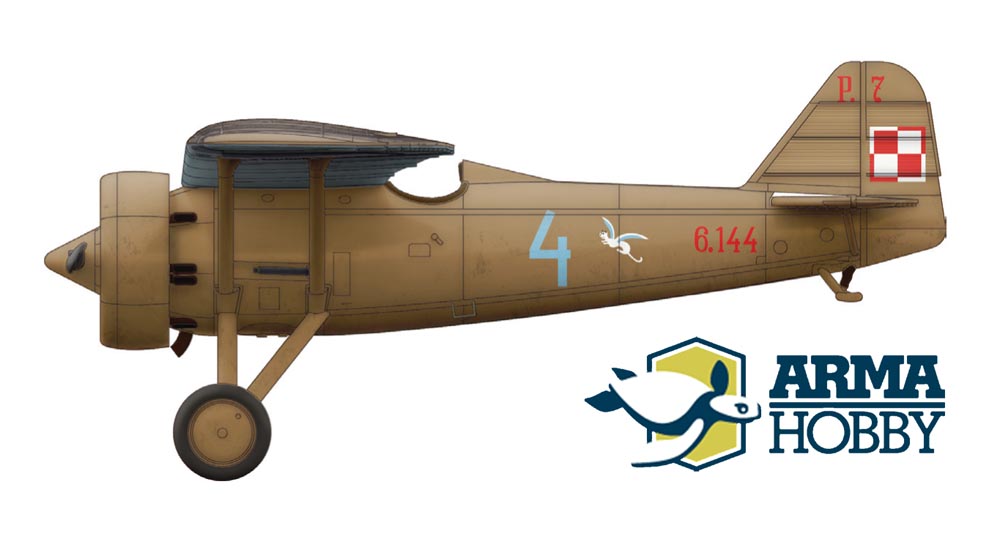

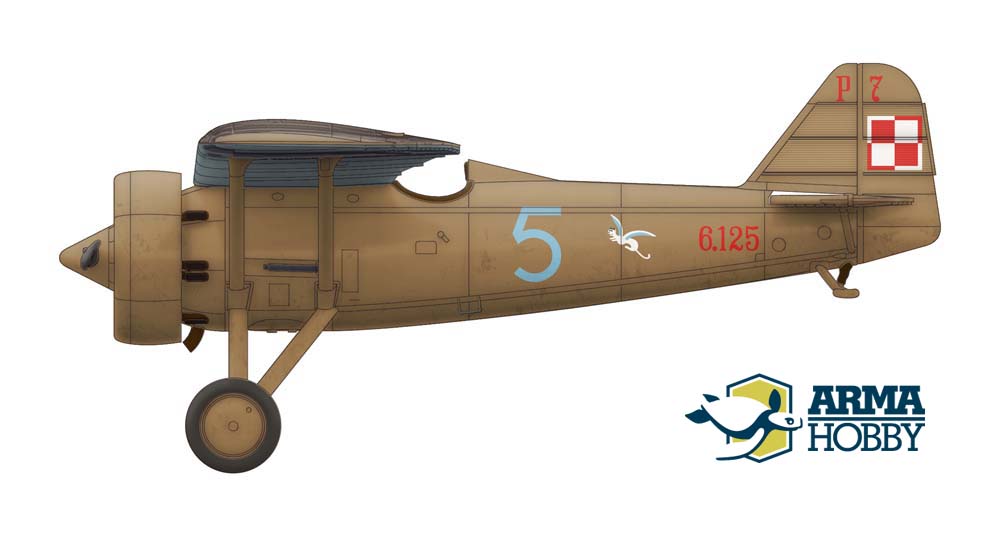
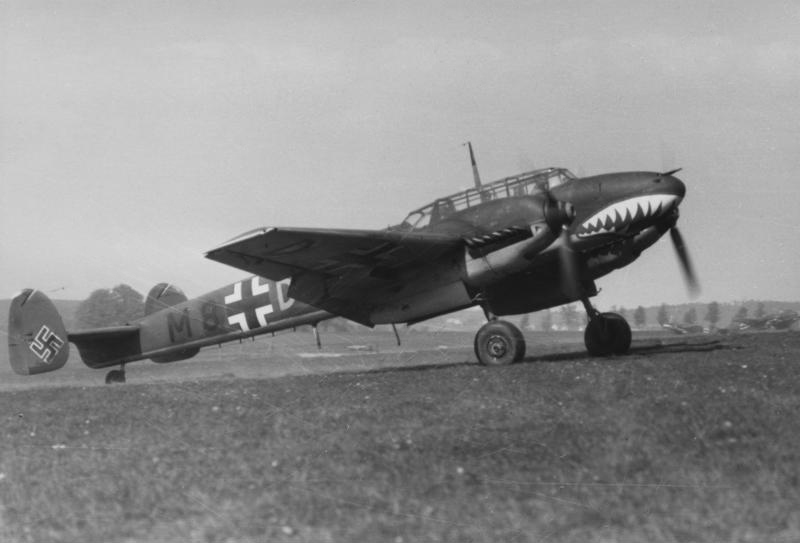



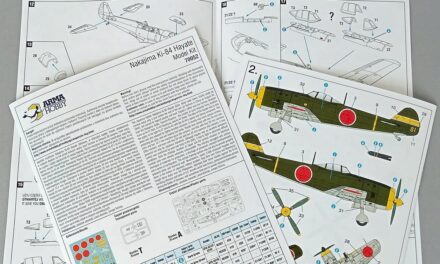
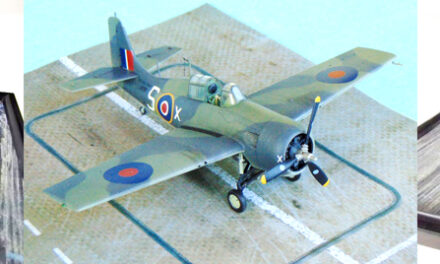

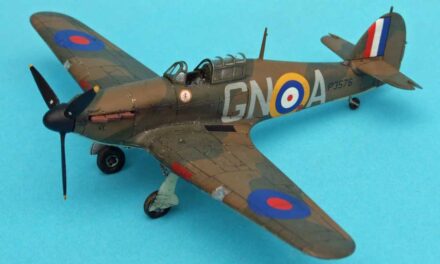
This is very interesting historical information on the P7a during the early days of the war.
I was also interested in the link regarding how you found information on the colours of the P.7a, but the link is dead for me.
Please could you put the link back in?
Keep up the good work with these superb kits and fascinating research 🙂
Best regards
Anthony
Thank you for comment! Here is a link P.7a colours and markings.